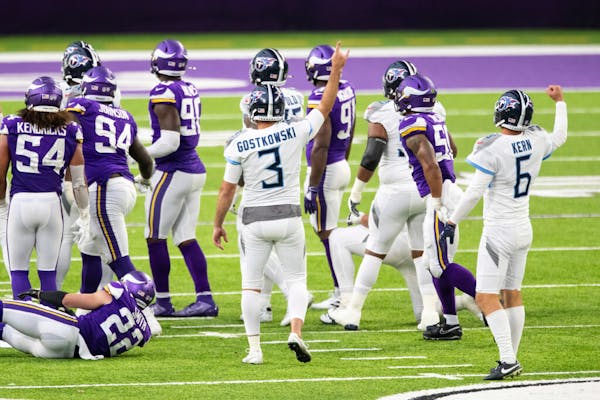When positive COVID-19 cases emerged within the Tennessee Titans, NFL protocols called for reports to be immediately generated detailing every Vikings player, coach or staffer with whom the infected individuals were in close contact. The Vikings had "a few moderate-risk contacts" before and after the game, according to the team's infection control officer, Eric Sugarman, but how is that determined?
Wearing trackers
Every NFL player, coach and staff member in the 2020 season is outfitted with a proximity device — a "SafeTag sensor" — worn as a wristband, badge or in jerseys to record distance between devices and time in close contact. The devices came from an existing league partnership with Kinexon, a German company that provides performance tracking technology to the NFL and NBA.
The sensors are required inside every NFL facility, during practice and games, and during team travel. Only a person's contacts are recorded — not location data — and close contacts are supposed to be anonymized until accessed by select members of each team.
Who's in close contact?
Close contact is defined by the NFL as being within six feet of someone for about 15 minutes, or direct physical contact during practices, games or team travel, or living in the same household, or handling uniforms, equipment or a shared object.
The data firm IQVIA will generate the reports of close contacts. In this case, the NFL reportedly identified 48 close contacts to monitor, according to ESPN, however it's unclear how many are from the Titans or Vikings. Sugarman noted "a few moderate-risk contacts" within the Vikings from interactions before and after the game with Titans personnel, adding more coaches and staffers were identified as close contacts than players.
Monitoring close contacts
The Vikings will have to monitor certain players because four infected Titans — nose tackle DaQuan Jones, long snapper Beau Brinkley, cornerback Kristian Fulton and linebacker Kamalei Correa — played in Sunday's game.
"On a football field, you're not going to have close contact, because the average football play lasts about six seconds. However, you do have continual contact for hours during a football game," Sugarman said.
Vikings a 'case study'
Sugarman called the Vikings' situation a "case study," in that sports are so far considered a low-risk activity to spread COVID-19, while football is "probably at the highest risk of all sports" to transmit the virus during play. He added three to five days after contact is generally the time frame in which the virus will show up on a test, meaning the Vikings will be awaiting test results for the next few days while returning to work.
